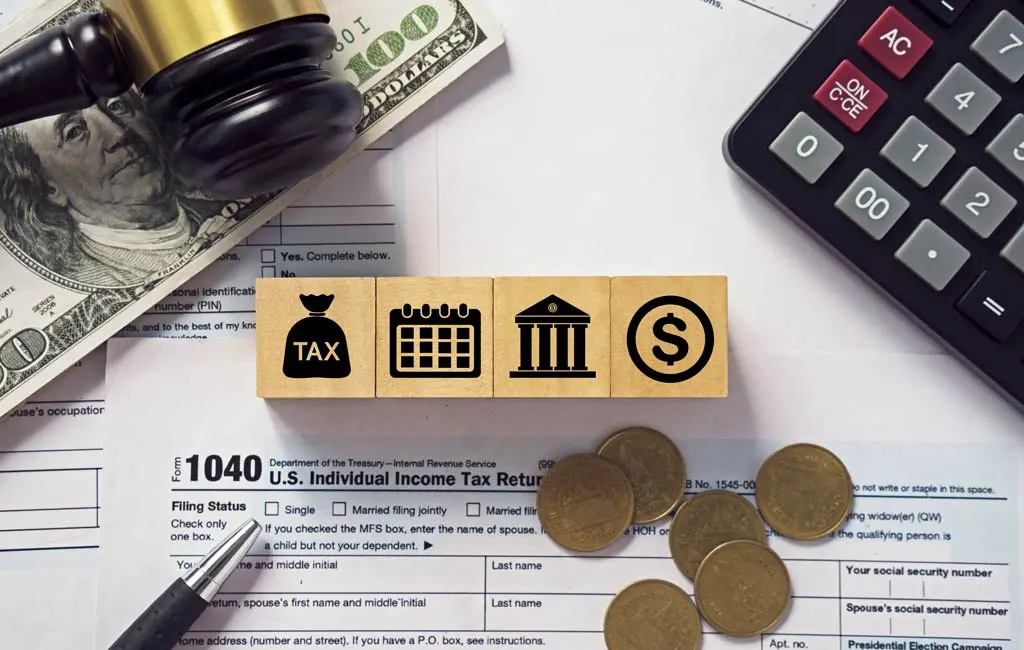Embarking on the retirement planning journey can often feel like navigating through a maze of financial choices, each with its own complexities. At the heart of this intricate landscape lies the Tax-deferred Retirement Plans, a pivotal tool that stands out for its ability to marry long-term wealth accumulation with savvy tax management.
This type of plan isn’t just a mere savings vehicle; it’s a strategic choice for those looking to optimize their financial resources in preparation for a comfortable and secure retirement. Understanding the nuances and leveraging the benefits of a Tax-deferred Retirement Plan is crucial in today’s ever-evolving financial world.
This guide is tailored to shed light on how these plans work, their various types, and their unique advantages, all while addressing the potential pitfalls you might encounter. Whether you’re just starting out in your career or looking to refine your existing retirement strategy, this blog aims to equip you with the knowledge and insights necessary to make informed decisions, ensuring a future where financial security isn’t just a goal, but a reality.

What Does Tax-deferred Mean?
Tax-deferred accounts, like traditional IRAs and 401(k)s, offer a unique advantage in financial planning, particularly for retirement. When you contribute to these accounts, you delay paying taxes on the money until the time of withdrawal, typically during retirement.
This means instead of paying taxes upfront when you make contributions, you enjoy the benefit of reducing your current taxable income. This immediate tax break lessens your tax burden in the contribution years and potentially places you in a lower tax bracket, optimizing your financial strategy in the present.
The IRS regulates these tax-deferred accounts by setting annual contribution limits, ensuring a balanced approach to retirement savings. This limitation is crucial in maintaining the integrity of the tax system while encouraging individuals to save for their future.
The deferred tax on these accounts allows your investments to compound over time without the yearly tax deductions on gains, which can significantly enhance the growth of your retirement funds. Essentially, tax deferral turns these accounts into powerful tools for building a more substantial retirement corpus, aligning your present financial decisions with future financial security.

What is the Purpose of a Tax-deferred Retirement Plan?
Retirement planning is essential to financial health, and tax-deferred retirement plans are pivotal in this process. These plans are not just savings vehicles but strategic tools designed to optimize your financial resources for a comfortable retirement.
1. Lowering Tax Bill Right Away
One of the immediate benefits of a tax-deferred retirement plan is reducing your current tax bill. Contributions made to these plans are often pre-tax, meaning they are deducted from your taxable income. This reduction can significantly lower your tax liability for the year, offering an upfront financial advantage and making it an attractive option for immediate tax relief.
2. Raising the Potential for Compounding
Tax-deferred plans amplify the power of compounding. Since taxes on investment gains are deferred, the money that would have gone to taxes remains invested, potentially increasing the amount of money that is compounding over time. This can lead to significantly larger account balances by the time you retire, compared to taxable accounts where annual taxes can reduce the compounding effect.
3. Saving on Long-term Taxes
These plans are structured to potentially align your tax payments with a period when you might fall into a lower tax bracket, typically during retirement. Paying taxes on your retirement savings at a lower rate in the future means you could save a substantial amount on long-term taxes, making it a prudent long-term financial strategy.
4. Eliminating Current Taxes on Investment Gains
A key feature of tax-deferred plans is eliminating taxes on dividends, interest, and capital gains within the account. This means that your investments can grow without the burden of annual taxes, allowing the full power of compounding to work on your entire investment, not just the after-tax portion. It’s a significant advantage over taxable investment accounts.
5. Supporting Your Savings Habit
The structure of tax-deferred retirement plans encourages consistent saving. With features like automatic contributions from your paycheck and the allure of immediate tax benefits, these plans make saving for retirement more manageable and habitual. This enforced savings habit can be a powerful tool in building a substantial nest egg for your golden years.

How Does a Tax-deferred Plan Work?
The concept of a tax-deferred plan revolves around the efficient growth of investments by minimizing the impact of taxes. When investing in standard taxable accounts, like brokerage or bank accounts, your earnings (interest, dividends, or capital gains) contribute to the overall growth of your investments. However, this growth is somewhat hindered by the annual taxes you must pay on these earnings. Over time, these taxes create a ‘drag’ on your investment compounding potential, reducing the speed and extent of its growth.
Tax deferral tackles this issue by delaying the tax payment on the growth of your assets until a later date, typically at the time of withdrawal. This means that the entire growth of your investment compounds over time without being reduced by yearly taxes. Such plans are especially beneficial when you start withdrawing these funds, often after 59½, as many people find themselves in a lower tax bracket post-retirement. This lower tax bracket can mean lower tax obligations than your working years. Additionally, by delaying withdrawals until the eligible age, you avoid penalties usually associated with early withdrawals from these accounts.
To put this into perspective, let’s consider a hypothetical scenario. Imagine two individuals, Jack and Jill, each investing $100,000. Jack chooses a taxable account while Jill opts for a tax-deferred account, both earning an annual return of 8%. Jack, with his taxable account, needs to pay taxes on his gains annually, reducing the amount available to compound over time.
Jill, on the other hand, benefits from the full compounding effect as her tax-deferred account exempts her from paying yearly taxes. After 20 years, this difference becomes starkly evident: Jack’s tax-deferred account outpaces Jill’s taxable account by nearly $160,000. This example clearly illustrates the powerful advantage of tax deferral in enhancing the long-term growth of investments.

What Types of Tax-deferred Retirement Plans Are Available?
Tax-deferred retirement plans stand out as a key element in building a secure financial future. These plans offer various benefits, including tax savings and investment growth, but understanding the different types available is crucial to making an informed decision that aligns with your retirement goals.
401(K) Plans
401(k) plans are one of the most recognized types of employer-sponsored retirement plans. Offered by many private-sector employers, these plans allow employees to contribute a portion of their salary to individual accounts. Contributions to a traditional 401(k) are made with pre-tax dollars, reducing taxable income and offering tax-deferred growth. Many employers also contribute to these plans through matching, further enhancing their attractiveness as a retirement-saving tool.
Individual Retirement Accounts (IRAs)
IRAs are tax-deferred retirement accounts that individuals can set up independently of their employer. Traditional IRAs allow individuals to contribute with pre-tax dollars, providing a tax break in the contribution year. The earnings in an IRA grow tax-deferred until withdrawals begin, typically in retirement. IRAs are a popular choice due to their flexibility and the wide range of investment options they offer.
403(B) Plans
403(b) plans are tax-deferred retirement plans available to employees of public schools and certain tax-exempt organizations. Similar to 401(k) plans, they allow participants to defer income tax on contributions until they withdraw them in retirement. These plans often include annuities and mutual funds and are particularly beneficial for long-term employees in the public and non-profit sectors.
457 Plans
457 plans are another form of tax-deferred retirement plan, primarily offered to state and local government employees, as well as some non-profit organizations. Unique to 457 plans is the lack of early withdrawal penalties if you leave your job, making them a flexible option for those in public service. Like other tax-deferred plans, they allow for pre-tax contributions, which grow tax-deferred until retirement.
Traditional Pensions
Traditional pensions, or defined benefit plans, are employer-sponsored retirement plans that promise a specified monthly benefit at retirement. The benefit often depends on factors like salary history and length of employment. While not as common as they once were, these plans are highly valued for the predictability and security they offer, as the employer bears the investment risk.

Advantages & Disadvantages of a Tax-deferred Retirement Plan
Tax-deferred retirement plans are a cornerstone of many people’s retirement strategies, offering a blend of tax benefits and growth potential. However, like any financial tool, they come with both advantages and disadvantages. Understanding these can help you make more informed decisions about your retirement planning.
Advantages of a Tax-deferred Retirement Plan
- Tax Savings: One of the most immediate benefits of a tax-deferred retirement plan is tax savings. Contributions made to these plans are often pre-tax, reducing your taxable income for the year. This can lead to significant tax savings, especially if your contributions move you into a lower tax bracket.
- Compound Growth: The money in your tax-deferred retirement account benefits from compound growth. Since you don’t pay taxes on the account’s earnings until you withdraw them, your money can grow faster than it would in a taxable account. Over the long term, this can result in a substantially larger retirement fund.
- Employer Match: Many employer-sponsored tax-deferred retirement plans, like 401(k)s, offer an employer match, essentially free money towards your retirement. If your employer offers a match, they will contribute a certain amount to your retirement plan based on how much you contribute, significantly boosting your savings
Disadvantages of a Tax-deferred Retirement Plan
- Withdrawal Penalties: One of the drawbacks of tax-deferred retirement plans is the penalty for early withdrawal. Generally, if you withdraw funds from these accounts before age 59½, you’ll face a 10% penalty on top of the regular income tax you’ll owe on the withdrawal, which can be a significant financial setback.
- Required Minimum Distributions (RMDs): Another disadvantage is that the Required Minimum Distributions (RMDs) must be taken from most tax-deferred retirement accounts at age 72. RMDs dictate the minimum amount you must withdraw each year, which could push you into a higher tax bracket, increasing your tax liability.

Final Words
A Tax-deferred Retirement Plan is a cornerstone of retirement planning, offering a blend of tax efficiency and savings growth. Understanding its workings, advantages, and potential drawbacks is crucial for anyone looking to secure their financial future. This understanding helps make informed decisions and tailors a retirement strategy that aligns with personal financial goals and circumstances.
For a deeper dive into the world of Tax-deferred Retirement Plans and to gain more insights on how they can fit into your overall financial strategy, we invite you to read our comprehensive blog at EduCounting. Our expertly crafted articles provide clarity, offering detailed guidance and tips to help you navigate your path to a secure and prosperous retirement.
FAQs
What are tax-deferred amounts?
Tax-deferred amounts refer to the money invested in certain retirement accounts, like 401(k)s and IRAs, where taxes on investment gains are postponed until the funds are withdrawn. This allows the investments to grow without immediate tax implications.
What is the best pre-tax contribution?
The best pre-tax contribution varies depending on individual financial situations. Still, generally, it’s the amount that maximizes employer matches (if available) and fits comfortably within your budget while also considering the annual IRS contribution limits.
Is Tax Deferral Really Such a Big Deal?
Yes, tax deferral is significant as it allows investments to grow without the immediate burden of taxes, potentially leading to a more substantial retirement fund due to the power of compound growth and tax savings over time.
Why is deferred tax created?
Deferred tax was created as a policy measure to encourage retirement savings by offering tax benefits. It helps individuals to grow their retirement savings more effectively and aligns tax payments with a period, typically retirement, when their income may be lower.








